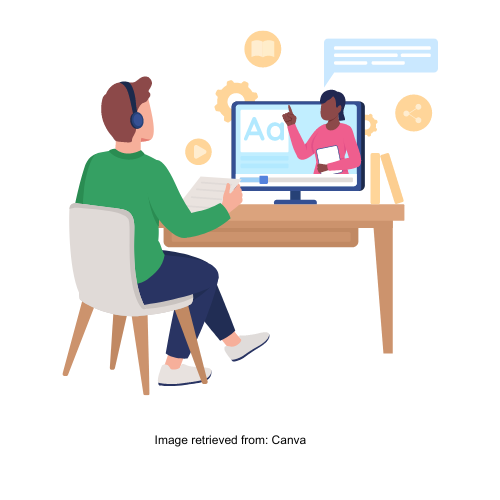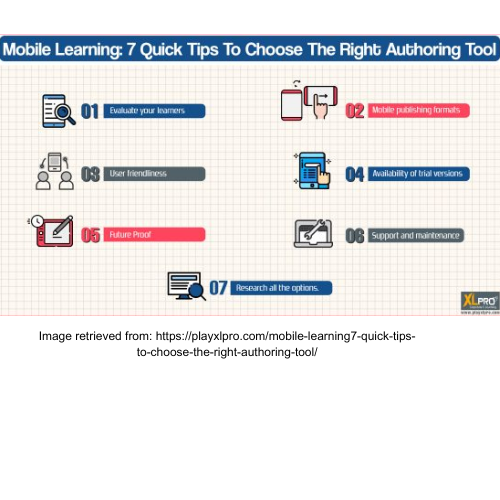Building Better Online Learning: The Essential Role of E-Learning Authoring Tools
- jessikaledezma
- Feb 26, 2024
- 6 min read

Introduction
In the constantly changing landscape of education, technology has become an integral part of the teaching and learning process. One of the most significant developments in this area is the use of eLearning tools, particularly authoring tools. As an educator and instructional designer, understanding and mastering these tools can significantly enhance the ability to create engaging, interactive, and effective learning experiences for students.
What are Authoring eLearning Tools?
Authoring eLearning tools are software applications designed to help educators and instructional designers create and develop interactive and multimedia-rich educational content. Nichols (n.d) states that authoring tools help create and publish digital courses in select formats. Instead of using code to create a course manually, an authoring tool lets you use drag-and-drop and other user-friendly interfaces to make a course. No coding experience is required. These tools allow designers to combine text, images, videos, animations, and interactive simulations, all within a user-friendly interface. These tools provide various features and functionalities to cater to different instructional needs. They often include templates, themes, and pre-built interactions that can be customized to fit your specific requirements. Additionally, many authoring tools offer collaboration features, making it easier for teams to work together on developing eLearning content. These tools allow engaging and interactive learning experiences to be delivered online, through learning management systems (LMSs), or even as standalone modules.

Types of Authoring eLearning tools
It is essential to understand the different types of authoring e-learning tools available. Educators and instructional designers can choose the most suitable tools for their specific instructional goals; such as audience needs, and technological preferences.
Pappas (2016) discusses five eLearning authoring tool types that eLearning professionals should know about:
1. Cloud-Based eLearning Authoring Tools
Also known as SaaS tools, these authoring platforms are hosted on the Cloud. Thus, you do not have to install software on the local hard drive.
2. Locally Hosted eLearning Authoring Tools
This type of eLearning authoring tool is installed on the local hard drive. This was the only option in years past, as you had to purchase a disc containing the software. Today, most locally hosted eLearning authoring tools are downloaded directly from the vendor's site.
3. Multimedia eLearning Authoring Tools
These eLearning authoring tools can be cloud-based or locally hosted, but they focus on one key aspect of eLearning course design.
4. PowerPoint Ribbon eLearning Authoring Tools
These are add-in eLearning authoring tools that are accessible via PowerPoint. Users can create eLearning content by using the ribbon interface in the application.
5. Screen Capturing And Recording eLearning Authoring Tools
These eLearning authoring tools are tailored for screen recording. They are ideal for developing software simulations and tech tutorials, as you can capture everything that appears on your screen.
Myths about eLearning Authoring Tools
Even though authoring eLearning tools are becoming very popular and widely used, some things still need to be corrected about them. These myths may discourage teachers from trying out and taking full advantage of the capabilities of authoring eLearning tools.
Teyssier (2016) explains other myths associated with eLearning authoring tools:
1. eLearning authoring tools are too expensive.
2. Copy pasting content in PowerPoint is instructional design.
3. Serious game development is time consuming.
4. An engaging course means just clicks.
5. eLearning authoring tools are not as effective as classroom-based learning.
6. Great eLearning authoring tools are all you need to design a great online training.
7. Learning simulations must be fun.
8. Learners did not finish the course: eLearning authoring tools must be bad.
9. If learners are passing your end-of-course assessment, then you’ve created successful eLearning.
These tools are designed to empower educators, not intimidate them. These user-friendly features and extensive resources make them accessible to educators from all backgrounds. Incorporating authoring tools can unlock new possibilities in creating engaging, interactive, and practical learning experiences for students.
Pros and Cons of Authoring eLearning Tools
Like any educational approach, e-learning tools come with their own set of pros and cons. Educators must consider these factors when incorporating e-learning tools into their teaching practices.
Some of the advantages taken from Harver (2023) show:
Authoring tools are designed to help content creators deliver eLearning content within a brief period. Various templates may be available to support the content creators in building structure into their content. This brings down the turnaround time significantly.
Authoring tools are designed to be user-friendly. No training or coding experience is needed to develop learning content using these tools.
Most authoring tools are free of cost to use. Some do have a subscription-based model, which is usually cost-effective. This makes it accessible to a wide range of amateur content creators and professional content creators such as publishers.
Authoring tools enable various add-ons based on the requirements of the content creator. For instance, it can enable the distribution of the latest content via email and social media. Some plugins allow higher interactivity of the content.
Engaging and Interactive Content: Authoring tools allow instructional designers to create multimedia-rich and interactive content, enhancing learner engagement and retention.
Consistency and Standardization: With templates and built-in features, authoring tools help maintain consistency in the look, feel, and structure of eLearning content.
Accessibility and Responsiveness: Many authoring tools support accessibility features and responsive design, ensuring that your content is accessible to learners with disabilities and across various devices.
Collaboration and Reusability: Authoring tools often facilitate team collaboration and enable content reusability, saving time and effort.
Cons:
Naveen Neelakandan (2023) discusses some of the cons of these tools:
The learning curve for complex tools
While user-friendly, some authoring tools may require significant time and effort to learn and master their advanced features.
Limited collaboration features Some authoring tools may need more comprehensive collaboration features, hindering seamless teamwork and real-time interaction among educators and content creators.
It may require additional software for full functionality Specific authoring tools might necessitate supplementary software or plugins to unlock their complete range of features, potentially adding complexity to the content creation process.
Potential Costs Although affordable options exist, some authoring tools can be expensive, especially for advanced features and commercial use.
Adopting authoring eLearning tools should be based on carefully evaluating specific needs and resources. The main idea is to analyze these tools with a critical yet open mindset, recognizing their value as powerful enablers of effective and engaging learning experiences.
Why do Educators Need to Know Everything About Authoring eLearning Tools?
Neelakandan (2023) argues, "In modern education and training, technology has paved the way for dynamic and efficient learning solutions.” In today's digital era, where online and blended learning environments are becoming increasingly prevalent, educators must embrace and master authoring eLearning tools. By doing so, they can create personalized learning experiences that accommodate students' diverse learning styles, abilities, and preferences. Additionally, these eLearning tools provide flexibility and accessibility, allowing educators to offer learning opportunities beyond geographical and time constraints. As technology continues to model the educational landscape, educators proficient in using authoring tools will stay relevant and competitive in their professions. Moreover, interactive and multimedia content can be created with authoring tools to enhance student engagement, motivation, and knowledge retention significantly. Mastering authoring tools can also be a valuable professional development opportunity for teachers and instructional designers, opening doors to new career paths and opportunities in the eLearning industry.
Conclusion
In education and training, authoring eLearning tools has become a crucial resource for educators to create engaging, interactive, and compelling learning experiences. Understanding the capabilities of these tools helps educators reveal a world of possibilities in delivering high quality education to their students. As someone aspiring to become an instructional designer, gaining proficiency in authoring eLearning tools is necessary. If I understand more about authoring tools, I will have the skills needed to translate complex content into engaging and effective eLearning modules, courses, and training materials. This knowledge will make me a more competitive candidate in the job market and open doors to a wide range of opportunities in corporate training, higher education, and various other industries that leverage eLearning. Embracing these tools is not just a matter of keeping up with technology; it is a crucial step towards empowering educators to shape the future of learning and equipping students with the skills and knowledge they need to thrive in the digital age.
Additional Resources
References
Harver, A. (2023, April 2). A brief guide to authoring tools. Hurix Digital. https://www.hurix.com/what-is-elearning-authoring-tool-the-pros-and-cons-of-using-an-authoring-tool/
Neelakandan, N. (2023, September 2). Authoring tools and lmss: Key differences. eLearning Industry. https://elearningindustry.com/authoring-tools-and-lmss-key-differences
Nichols, R. (n.d.). What is an authoring tool and do you really need one?. 360Learning. https://360learning.com/blog/authoring-tool/
Pappas, C. (2016, August 22). Pros and cons of 5 eLearning authoring tool types. eLearning Industry. https://elearningindustry.com/pros-cons-elearning-authoring-tools-types
Teyssier, Y. (2016, April 8). 9 myths about eLearning authoring tools and how to use them properly. eLearning Industry. https://elearningindustry.com/9-myths-about-elearning-authoring-tools-use-properly





Comments